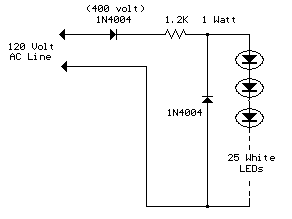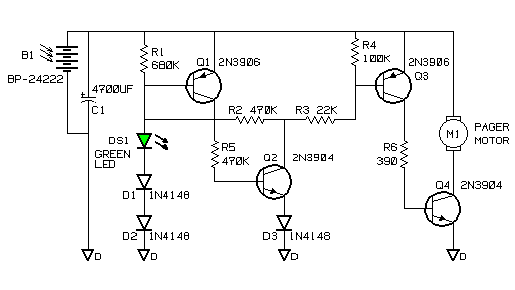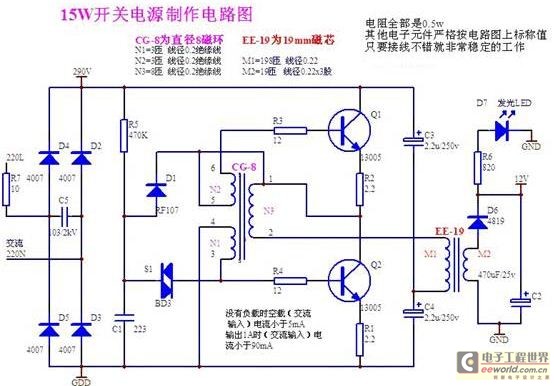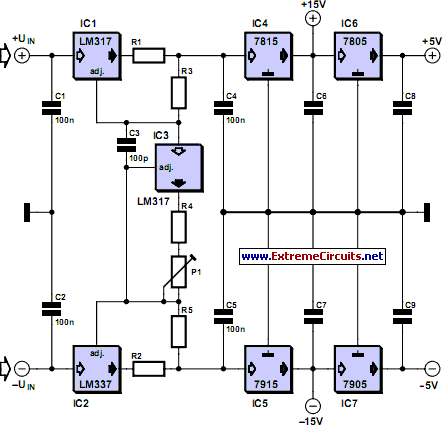
variable dc power supply
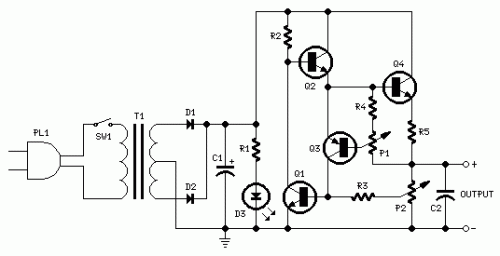
A Variable DC Power Supply is an essential tool for electronics hobbyists. This circuit, while not entirely new, is designed to be simple, reliable, robust, and short-proof. It offers variable voltage up to 24V and variable current limiting up to 2A, making it suitable for powering various circuits. Adaptations can be made to meet specific requirements as outlined in the accompanying notes.
The Variable DC Power Supply circuit typically consists of several key components: a transformer, a rectifier, a filter capacitor, a voltage regulator, and current limiting circuitry. The transformer steps down the AC mains voltage to a lower AC voltage suitable for the desired output. The rectifier, which can be either a bridge or a single diode, converts the AC voltage to pulsating DC. Following this, the filter capacitor smooths the pulsating DC into a more stable voltage.
The voltage regulator is crucial for maintaining a constant output voltage despite variations in input voltage or load conditions. Commonly used voltage regulators include the LM317 adjustable voltage regulator, which allows for output voltage adjustment. The output voltage can be varied by changing the resistor values in the feedback loop of the regulator.
Current limiting is typically achieved through a series resistor or a more sophisticated current sensing circuit that can adjust the output based on the load. This feature protects both the power supply and the connected circuits from excessive current draw, which could lead to overheating or damage.
The circuit layout should be designed with attention to component ratings and heat dissipation, as the voltage regulator and other components may generate heat during operation. Proper heat sinking and ventilation should be considered to ensure reliable performance.
In conclusion, a Variable DC Power Supply is a versatile and valuable addition to any electronics workbench, allowing for the experimentation and testing of various circuits with adjustable voltage and current settings.A Variable DC Power Supply is one of the most useful tools on the electronics hobbyist`s workbench. This circuit is not an absolute novelty, but it`s simple, reliable, ""rugged"" and short-proof, featuring variable voltage up to 24V and variable current limiting up to 2A. It`s well suited to supply the circuits shown in this website. You can adapt it to your own requirements as explained in the notes below.. 🔗 External reference
The Variable DC Power Supply circuit typically consists of several key components: a transformer, a rectifier, a filter capacitor, a voltage regulator, and current limiting circuitry. The transformer steps down the AC mains voltage to a lower AC voltage suitable for the desired output. The rectifier, which can be either a bridge or a single diode, converts the AC voltage to pulsating DC. Following this, the filter capacitor smooths the pulsating DC into a more stable voltage.
The voltage regulator is crucial for maintaining a constant output voltage despite variations in input voltage or load conditions. Commonly used voltage regulators include the LM317 adjustable voltage regulator, which allows for output voltage adjustment. The output voltage can be varied by changing the resistor values in the feedback loop of the regulator.
Current limiting is typically achieved through a series resistor or a more sophisticated current sensing circuit that can adjust the output based on the load. This feature protects both the power supply and the connected circuits from excessive current draw, which could lead to overheating or damage.
The circuit layout should be designed with attention to component ratings and heat dissipation, as the voltage regulator and other components may generate heat during operation. Proper heat sinking and ventilation should be considered to ensure reliable performance.
In conclusion, a Variable DC Power Supply is a versatile and valuable addition to any electronics workbench, allowing for the experimentation and testing of various circuits with adjustable voltage and current settings.A Variable DC Power Supply is one of the most useful tools on the electronics hobbyist`s workbench. This circuit is not an absolute novelty, but it`s simple, reliable, ""rugged"" and short-proof, featuring variable voltage up to 24V and variable current limiting up to 2A. It`s well suited to supply the circuits shown in this website. You can adapt it to your own requirements as explained in the notes below.. 🔗 External reference
